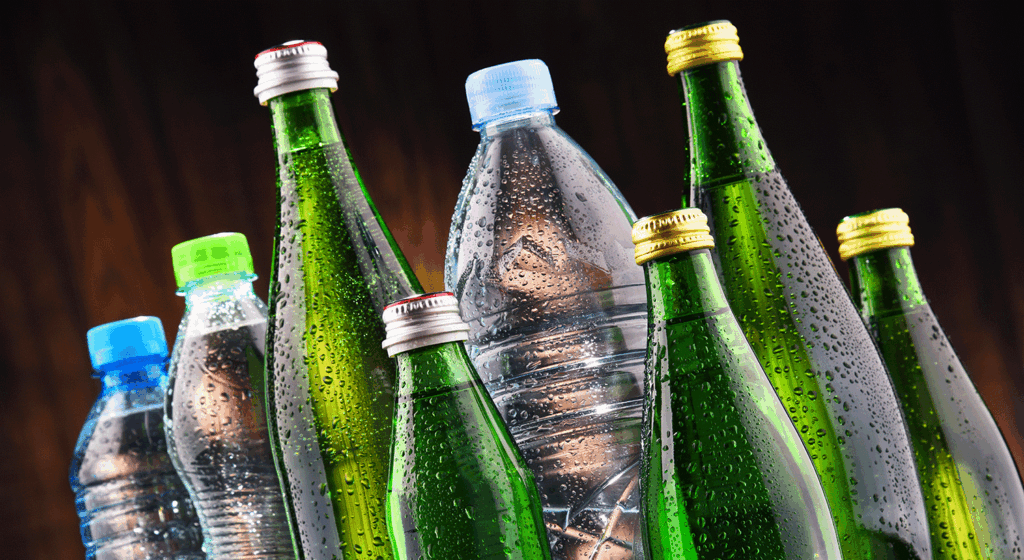
Every time we recycle a bottle instead of tossing it in the trash, we’re making an important choice to benefit the health of our planet.
More than 480 billion plastic bottles alone are used worldwide, which doesn’t even include bottles made of other materials, like glass and metal. That’s why understanding the concrete benefits of recycling for the environment is even more crucial than ever.
Whether you’re wondering what types of plastic can be recycled, the different types of recycling that exist for bottles made of different materials, or simply how to recycle your bottles the right way, we’ll get to the bottom of your questions and explain why bottle recycling makes a difference for the earth.
Types of Recyclable Bottles Explained
Recyclable bottles can be made out of a few varied materials, each of which has specific guidelines for recycling. These are the most common materials for recyclable bottles:
- Plastic: Plastic is the most common material for recyclable bottles. Most plastic bottles are labeled with a recycling symbol and a number that indicates the type of plastic they’re made of (such as #1 PET or #2 HDPE).
- Glass: Glass bottles can be recycled indefinitely without declining in quality and are accepted in the vast majority of curbside programs.
- Aluminum: Aluminum bottles (which are less common than cans of the same material) are extremely efficient to recycle, allowing them to be reused repeatedly.
Now that we’ve provided this overview of bottle materials, let’s get into the key details on specific types of recyclable bottles.
Plastic Bottles: What You Need to Know
Plastic bottles are by far the most common type of recyclable bottle, with plastic found everywhere from water bottles to food containers and bottles of cleaning products. However, not all plastics are created equal – various plastics have various properties, such as clarity and chemical resistance. This means that there are also several diverse types of plastic recycling.
Bottles made out of #1 (PET) and #2 (HDPE) plastics are some of the most commonly recycled bottles, and they’re accepted by most recycling programs. However, plastics that are labeled #3 through #7 might not be accepted by recycling programs. Do your research on local plastic recycling rules to avoid contamination and make sure that the bottles that you recycle are actually recycled, instead of being sent to a landfill.
Benefits of Glass Bottle Recycling
Glass bottles are one of the most sustainable choices for containers, thanks to an inherent property of glass recycling: glass can actually be recycled over and over, practically infinitely, without declining in quality.
Recycling glass also uses less energy than producing new glass, which means fewer greenhouse gas emissions are polluting our atmosphere.
Another benefit of glass recycling is that it helps to reduce landfill use, which means fewer glass bottles that sit in landfills (they take literally one million years to break down, so it’s especially worth avoiding).
About Other Recyclable Bottle Materials
In addition to more common plastic and glass bottles, bottles made from metals such as aluminum and stainless steel are also recyclable.
Similar to glass, aluminum bottles (and cans) are especially worth recycling since they can be reprocessed over and over without losing quality, and they also require far less energy to recycle than to produce new.
Stainless steel bottles are typically designed to be reused for many years at a time, but when they reach the end of their lifespan, you can bring them for recycling at scrap metal facilities.
Keep in mind that less common bottle materials such as aluminum and steel may not be accepted in standard curbside bins, so you may need to do additional research to find out the best way to recycle them. It’s worth the extra effort, though, since recycling conserves resources and reduces harm done to the environment.
How to Properly Recycle Bottles
In many cases, you can recycle glass and plastic bottles via curbside municipal recycling.
However, bottle drop recycling – such as that offered by CLYNK – is typically much more efficient. Curbside recycling (especially if it’s single stream) can often be contaminated, which can mean that bottles that are sent for recycling don’t actually end up getting recycled. Instead, they may be sent to a landfill.
Bottle drop recycling, such as CLYNK, is multi-stream, which means less contamination and more efficient recycling. The data on bottle drop recycling speaks for itself: Oregon uses the same technology as CLYNK to achieve a 90 percent redemption rate (the highest in the United States).
Start Recycling Bottles, Cans, and Other Containers with CLYNK
Bottle drop recycling with CLYNK is as simple as placing your bottles and cans in their designated recyclable bags, tagging your bag with your personalized bag tag (you can print these out at CLYNK kiosks), and then bring the bags to your nearest CLYNK drop-off location, where you’ll scan them and drop them off. That’s all.
Sign up online to receive your free bag tags, CLYNK cards, and a voucher for ten CLYNK recyclable bags. Or head to a CLYNK kiosk near you to sign up and get your membership card, a box of bags, and bag tags.